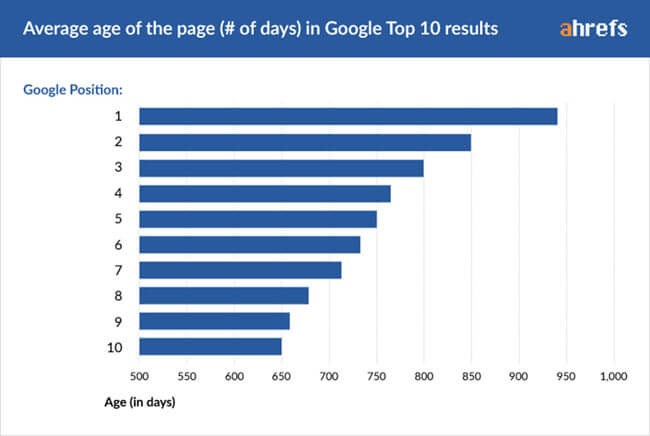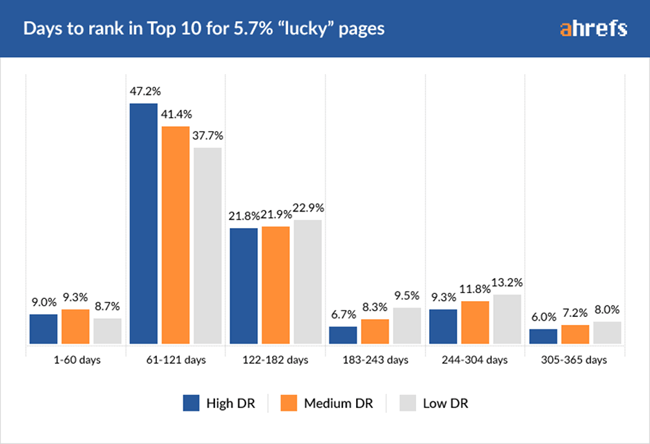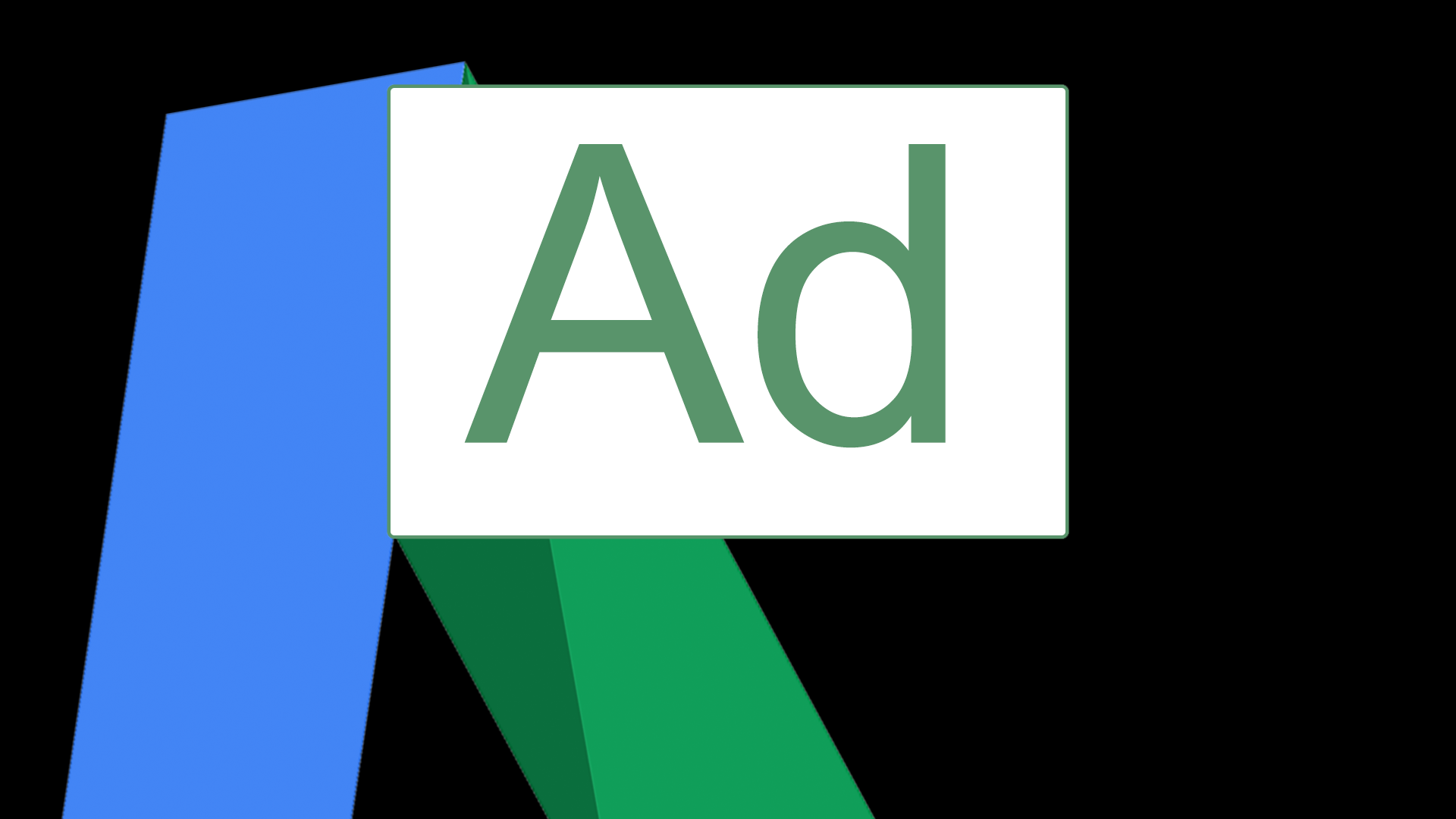
Just about the first thing that a potential reputation management client will ask when considering asking someone to clean up their name in the search results is: “How long will it take?”
This is unfortunately not easy to answer. Deploying content and changes to displace something negative in Google and Bing is complicated, involving literally thousands of variables, and it typically requires development over a period of time.
In some ways, the question, “How long does reputation repair take before it is successful?” used to be a little easier to estimate. In my opinion, Google used to be less sophisticated and more consistent across similar types of search terms.
We also had a little more quantitative information about websites and web pages in the search results, via the Browser PageRank Toolbar, which used to provide us with a rough numerical score of the PageRank value of web pages.
Using that PageRank score, and evaluating the keyword relevance of pages appearing in the listings for particular searches was one way of obtaining a rough numerical calculation of how strong pages were (including other factors to assess relative difficulty, such as how many pages Google shows as relevant for a particular search, etc).
But Toolbar PageRank was discontinued in 2016, and it hadn’t seen updated score values in some years. Sure, some folks will use scores from third-party analysis engines, like the Domain Authority or Page Authority numerical values created by Moz, to have access to a numerical score that can still provide rough order-of-magnitude values of relative page ranking strength. But the efficacy of these scores is often unquestionably lower than the values that were provided directly by the search engine itself.
As an influential component of page rankings, the numerical PageRank score seemed to have eroded by a large degree anyway. In the past so many years, even pages and sites with very few links (and even relatively low-to-no use of keywords on the page itself) can leapfrog up onto page one of search results.
Clearly, various other factors beyond the computed PageRank score plus direct keyword relevancy have become far more influential in Google’s ranking algorithms. And, as I’ve written before, the click-through rate seems to influence rankings strongly (or some closely related metric), which frequently provides negative materials with significant advantages in search results.
One truism of online reputation management is that when a reputation repair project is undertaken, the company or individual that is the subject of the work typically has woefully insufficient web assets and content.
Executives frequently eschew having social media profiles or personal websites, out of the misguided belief that by doing so they are preserving their privacy. Small to medium-sized businesses often believe they’re not all that affected by their online presence, until something appears that damages them on page one.
Individuals and companies often must abruptly launch web pages and social media profiles, and beef up existing collateral to counter negative items.
So, just how long does it take?
To the uninitiated, merely publishing websites, web pages, articles, social media profiles and images may seem like it ought to be sufficient to displace a few negative items, but that’s typically not the case.
Even though Google and Bing have advanced considerably over time, a bedrock element of their functioning involves evaluating the number and quality of links pointing to all of the materials that are relevant for a particular name search. (This also applies to social media platforms in terms of the numbers of connections and “likes” that one profile may have versus another. In social media, things branded as “connections” or “followers” or “likes” are still essentially types of internal links which search engines may use to establish relative rankings.)
High-quality links rarely can happen overnight. They need to be developed, and this requires time. A well-established news site or reviews site may have spent many years developing inlinks and ranking ability which cannot be overcome in just a few days by your competing content.
While search engine rankings could once be manipulated by buying hundreds of links at once, they are far more sophisticated today, and they can detect paid links and unnatural linking patterns very rapidly.
Even if you could buy a thousand links at once, that wouldn’t likely help. If a page abruptly has such an increase in links, it could get flagged as suspicious by search engines unless the links represented a spike of interest, such as from a news feeding frenzy or social media shares that conform to a normal pattern enjoyed by media that goes viral.
It takes significant time to get new web pages to rank high in search results. A study by Ahrefs determined that most newly introduced web pages do not appear on page one of search results in the first year they are created.
In fact, most of the content appearing in the top 10 listings in Google search results is two years old or more, with the highest-ranking items being the oldest ones.

The Ahrefs study further determined only 22 percent of pages that currently rank in the top 10 were created within one year, and only 5.7 percent of all studied pages ranked in the top 10 search results within one year for at least one keyword.
Of those “lucky” 5.7 percent of pages, most of them achieved their top 10 rankings within 61 to 182 days.

Do not despair! I’ll add some caveats to the findings in the Ahrefs study.
Their findings were assessed based on 2 million random keyword search results, rather than focusing on newly introduced materials that seasoned search engine optimization (SEO) developers and online reputation management (ORM) experts were working on.
One would reasonably expect that newly introduced materials that are being specifically and professionally optimized might have a better chance of appearing on page one of search results in a shorter period of time than content that is deployed with little or no direct help.
But, even considering that caveat, an online reputation repair project is filled with challenges. One must usually improve the rankings of multiple, distinct items/pages to push down one bad thing from page one. Negative items are frequently pages or images from websites that have long-term, well-developed clout in search rankings.
The psychological dynamics of negative items are difficult to duplicate and counter with less scandalous, less controversial, positive or neutral content. Some reputations are also subject to ongoing, repeated attacks of negativity, periodically infusing them with more ranking power. And the search engines try to resist “artificial” manipulation of search results.
So, expect it to take a while. Figure it will take three months only in the luckiest of cases, but more likely six to 18 months.
Time is on your side
Time itself is often on your side with online reputation repair projects.
Once news articles fall off the front pages of their respective websites, they immediately lose some of their PageRank value — the items linked directly from the front page of major news sites always receive a big ranking benefit for a little while, which disappears once they start dropping off into the older archives of those sites.
Newer items often have “freshness” or “recency” going for them in search algorithms. Search engines give a little more ranking ability to various types of content that they determine to be of greater interest while it is still current — that is, within hours, days, months or a year of its creation.
As public interest in a recently introduced item wanes, the frequency of comments and social media shares also subsides.
Social media updates and links to a topic can also rot over time, slowly eroding its ranking ability. As sites and blogs that link to a negative item go defunct, their linking weight evaporates.
This isn’t to say that one may simply ignore bad stuff and it will go away. Allowing something to appear on page one for a period of time seems to convey a degree of “incumbent advantage” as Google collects long-term data on its relative click-through rate for the search keyword over time.
If you can start displacing it, even by one position in the search result rankings, visibility and associated interactions with the negative item may begin a trend of reducing prominence.
Not everything takes a long time
In cases where there are few search results that are specifically focused on a name, it can be far easier to displace one or a few negative items. (Likewise, if you have not performed proactive online reputation management for yourself and your business, you’re making it easier for any potential future negative item to immediately rank. So, don’t avoid beefing up your presence when you don’t have a reputation issue — or else you leave yourself open to an attack.)
Sometimes, a good reputation management pro can see a shortcut to cleaning up your reputation that doesn’t require long-term work on getting many things to rank.
For instance, I’ve sometimes made negative items completely disappear by petitioning a review site to delete reviews that broke the site’s rules, or by asking an internet service provider to disable a website they host that is harassing someone.
And, don’t forget potential legal options to make something disappear — some of the most effective online reputation cases used a combination of online marketing along with litigation to remove deceptive and unfair materials.
There are some types of negative content that Google and other search engines have specifically downgraded by some degree. For instance, Google has reduced rankings of arrest record and mugshot photo websites, so when one performs the proper reputation repair work, one may expect those types of negative content to subside much more quickly than many other types of reputation repair projects.
Finally, combining traditional public relations and publicity campaigns can sometimes help you leapfrog into quicker positive outcomes. A good promotion campaign could help you rapidly accrue many beneficial links to your materials, or releasing a fantastically-engineered piece of content that goes viral could overwhelm any negative item.
So, unfortunately, each online reputation project may be different, with greatly different factors in terms of the ranking power of the negative items and the ranking ability of your existing and new positive items.
Expect your repair project to take a while, and perhaps a longer rather than a shorter amount of time. Considering that your name and reputation are some of your most important assets, the investment in improvement will ultimately be worth the wait.
Contributing authors are invited to create content for Search Engine Land and are chosen for their expertise and contribution to the search community. Our contributors work under the oversight of the editorial staff and contributions are checked for quality and relevance to our readers. The opinions they express are their own.



